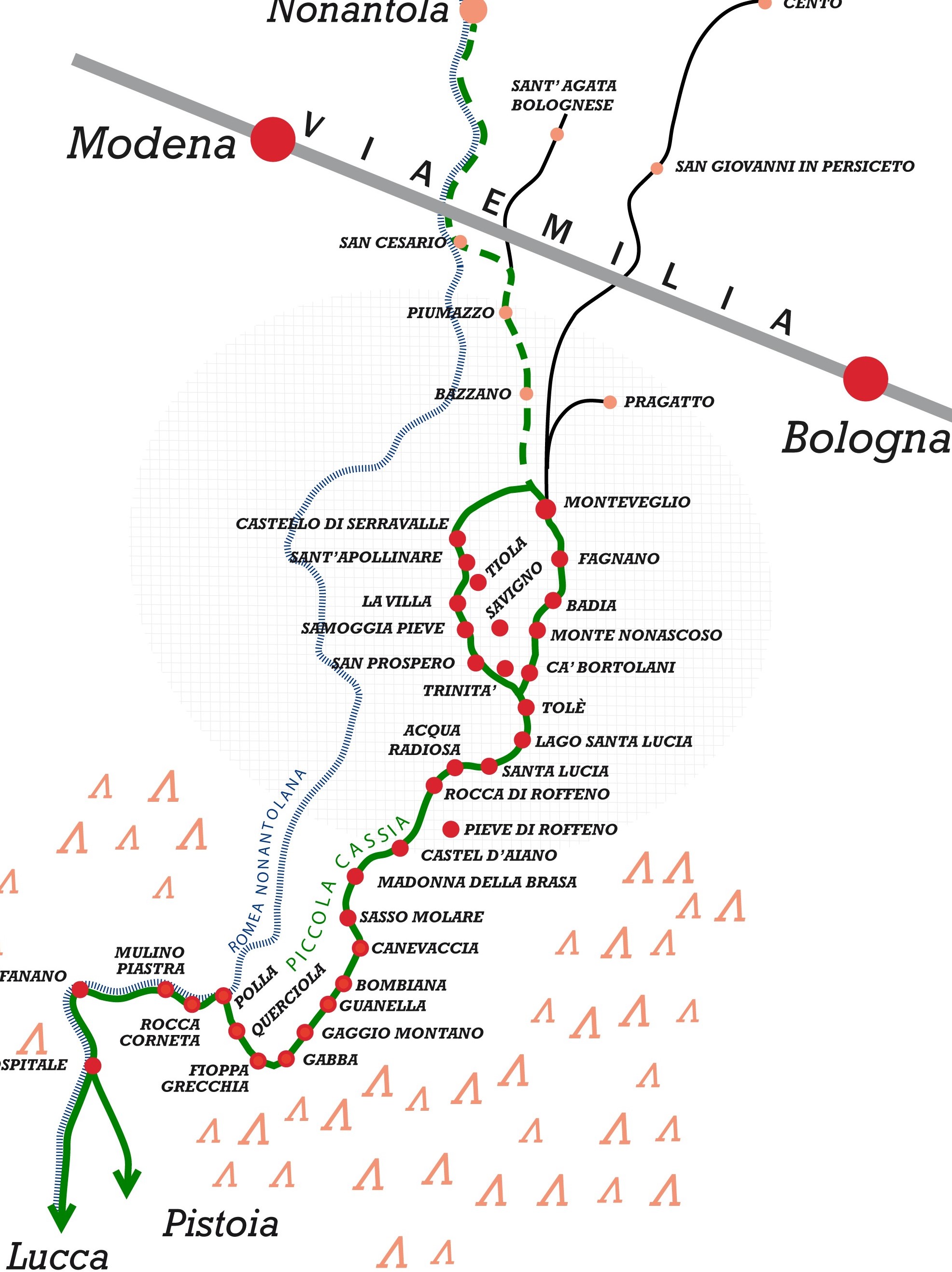
The little Cassia, recently rediscovered and made passable, retraces that stretch of the Apennines that the Romans already used to reach the central Po Valley going up from Pistoia in the direction of Modena and Bologna.
In the High Middle Ages it became a Longobard road and therefore one of the many itineraries that led to Rome joining up with the Via Francigena. Following it in a southerly direction (towards Rome) is an evocative journey, rich in many historical-religious testimonies (Nonantola Abbey, Rocca di Bazzano, Monteveglio Abbey, Castle of Serravalle and S. Apollinare, Badia, Santa Lucia and Pieve di Roffeno, Bombiana, Rocca Corneta, Fanano and many other historic centers and villages) and characterized by a particularly interesting rural and natural landscape (from the fertile centuriated plain, to the hills of gullies and vineyards, to the severe woods and large prairies of the Apennine ridge).
Walking slowly along this path you can have an important cultural experience, an intimate spiritual experience and, no less important, a tasty gastronomic experience: we are in fact in the lands of Parmigiano Reggiano, typical Modena and Bolognese cold cuts, pignoletto wine and many mountain specialties still little known.